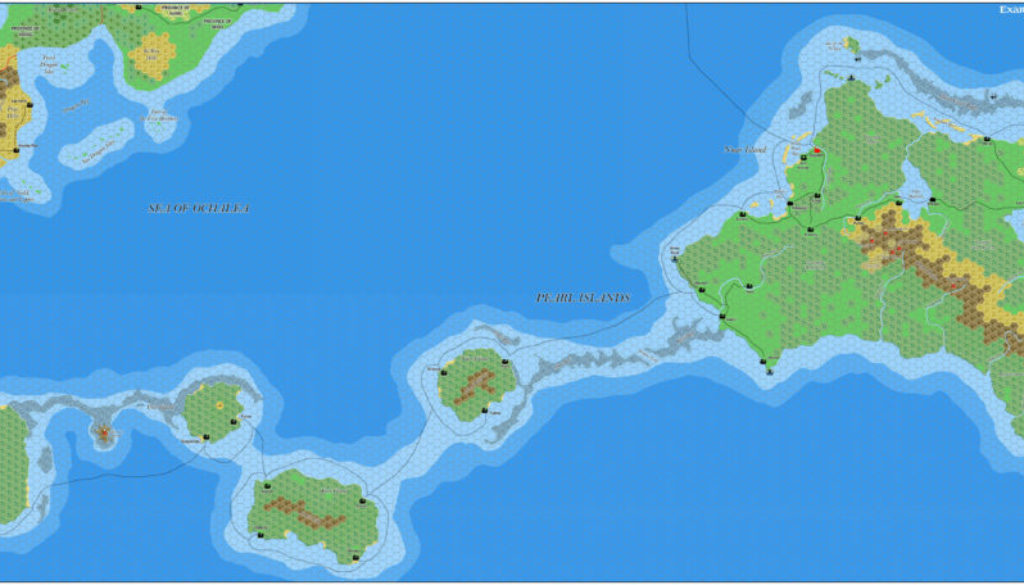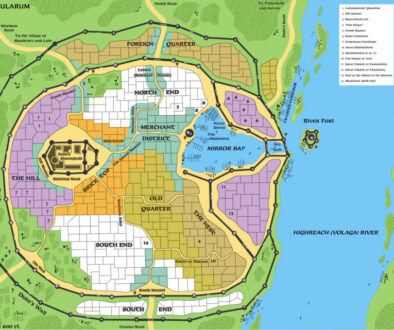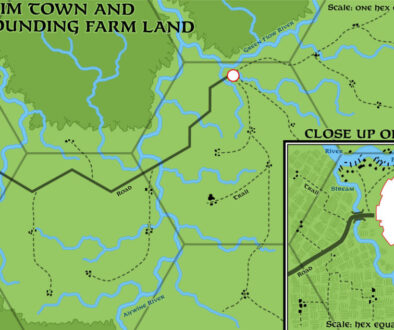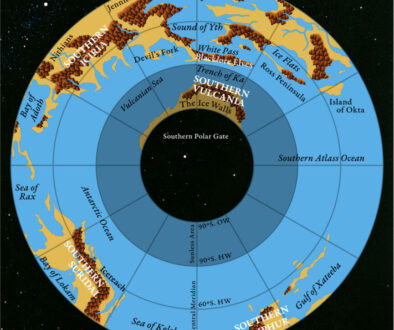Ramelin’s Pearl Islands, 8 miles per hex v1
November 2015 was a momentous month for Jose’s project, as he finalised more than thirty individual maps over a couple of days. The first set covered most of the Known World, while the second finished that off and then moved west to cover the Serpent Peninsula and the Savage Coast.
This is the last map from the first set, and as you can see the focus is now moving away from the Known World. The subject is the Pearl Islands, which Jose dubbed the Exarchate of the Pearl Islands — part of the Thyatian Empire, of course. This is an area that had seen few fan treatments up to this point, and Jose incorporated designs from Thibault’s Pearl Islands, 8 miles per hex map — especially its treatment of Nuar — while adding a great amount of small details of his own devising. Of particular note are the named settlements, the extensive reefs, and of course Jose’s usual coastline and sea depth tweaks.
Fan-made Map by Jose Ignacio Ramos Lomelin (November 2015)
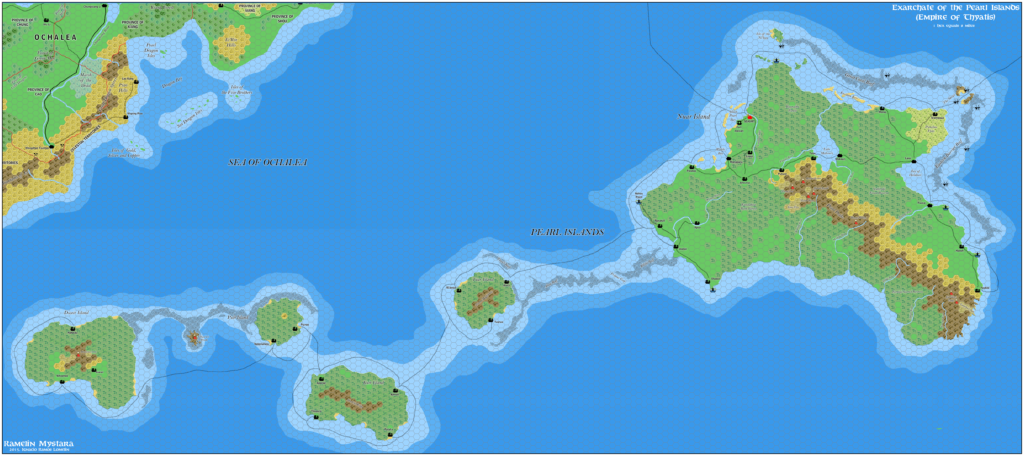
This is an original map created by one of Mystara’s excellent fan cartographers. For more information on the cartographer, including a gallery of all their maps, see also Appendix M: Mappers of Mystara.
Sources
- Dawn of the Emperors (1989) (PDF at DriveThruRPG)
- Thibault’s Pearl Islands, 8 miles per hex
References
- All of Jose’s maps at the Atlas of Mystara
- Jose’s entry in Appendix M: Mappers of Mystara (upcoming)
- Jose’s author page at the Vaults of Pandius
Chronological Analysis
This is a fan-made map. It was published in November 2015. The updated Atlas version of this map is not yet available. See also Appendix C for annual chronological snapshots of the area. For the full context of this map in Mystara’s publication history, see the upcoming Let’s Map Mystara 2015. (Please note that it may be some time before the project reaches this point.)
The following lists are from the Let’s Map Mystara project. Additions are new features, introduced in this map. Revisions are changes to previously-introduced features. Hex Art & Fonts track design elements. Finally, Textual Additions are potential features found in the related text. In most cases, the Atlas adopts these textual additions into updated and chronological maps.
Coming Soon

